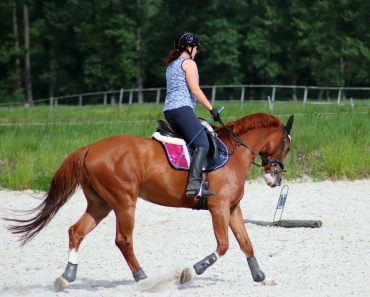Have you lately remembered that horses are great? Horses appear to understand what we want them to do and gladly perform it, no matter how chaotic or ungainly our efforts are. This is something to keep in mind the next time you’re thinking about perfectionism and the “only correct way” to accomplish anything.
Be Willing to Try New Things
It’s not just a problem in dressage. I used to participate in point-to-point races. My horse was a dead runaway, so I sought advice from several trainers on how to get him to calm down and save his energy early in the race. To keep him from fleeing, one trainer suggested I use my reins in a double bridge and lock them against his neck. Another trainer advised me to start with my reins looped so that my horse would have nothing to lean against. Neither of these strategies worked; nonetheless, it was enjoyable experimenting, and Old Lockjaw had a good time.
Horses, for the most part, enjoy being around people and want to please us. This implies that if we are non-confrontational, we may teach them things in a variety of ways. Of course, achieving success with your horse will be considerably easier if you start with a simple task and then work your way up to more advanced activities. The safest route to achievement is from simplicity to complexity. Your leg-yielding will be far superior if you’ve taught your horse to turn on the forehand first, for example. The hard part is deciding how to teach something; this is where trainers and theoreticians can get you confused since they have different viewpoints on the technique.
The greatest advice I can offer you is to simply relax and trust whatever the current trainer has in store for you. In other words, it will either work for you or against you. You’ve learned something regardless of whether it works for you or not because learning what not to do is sometimes just as essential as learning what to do.
Horses’ Requirements Vary With Time
Your confusion is a natural component of your learning process, and it’s only natural that part of it stems from conflicting advice. Horses mature and change over time, and what was required of a green horse isn’t necessary for an older, more experienced one. Furthermore, each type of horse responds to different methods. Thoroughbreds, for example, do not require as much leg to propel themselves as colder-blooded horses. One of the many reasons I am so interested in horses is that they are all unique and need a slightly different strategy than any other animal on earth. I have a limited attention span, but I’m never bored around horses. Horses offer me something new to learn every time.
Some of the conflicting opinions we hear are driven more by a rider’s or trainer’s personal preferences than any notion of equitation. Those preferences, in turn, are frequently based on the individual’s prior experiences. They will often recommend riders to do what they did if they became famous working with a specific breed of horse, even though today’s horses would benefit from a somewhat different approach. The nice aspect about horses is that, even under an inefficient system, they will seek out the correct result and offer it to us time after time, demonstrating their desire to please.
Classical Approaches Are Effective Time and Time Again
We should also be aware that any horsemen who achieve long-term success will employ sound methods. Trainers frequently succeed with odd tactics, but they seldom duplicate their outcomes after a once-in-a-lifetime horse retires.
So, if you move barns or trainers and are instructed something different than what you’ve previously been told, what are your options? (It should go without saying that the advice being offered, however unusual as it may be, does not have the potential to harm your horse.) You have a best-case scenario either way. If it works, you’ll be a better rider on a horse who is improving; if it doesn’t work, at least you know not to try it again. Just remember the suggestions, even if you decide not to follow them for yourself and your horse right now. That guidance most likely worked for someone else before, and you want new answers to come in handy when a new horse presents difficulties. If the new horse is a different breed from the one you previously had, the same techniques that failed to work for your prior horse may be precisely what you need now.
More Than One Way To Do It Works
You’ll always need horse advice, and much of it will contradict what you’ve previously been told. It’s a never-ending process of learning from your mistakes when it comes to horses. If you remember that every system has advantages and drawbacks, you should be able to improve.

